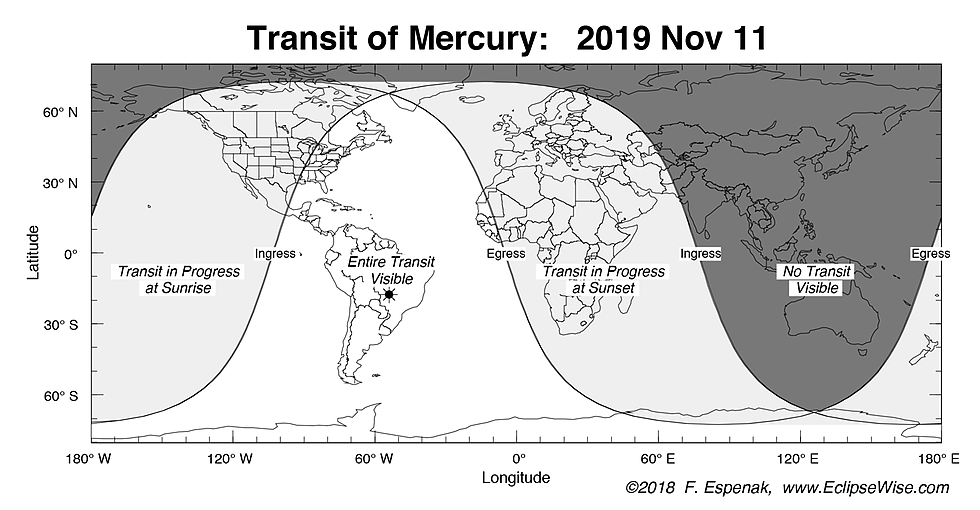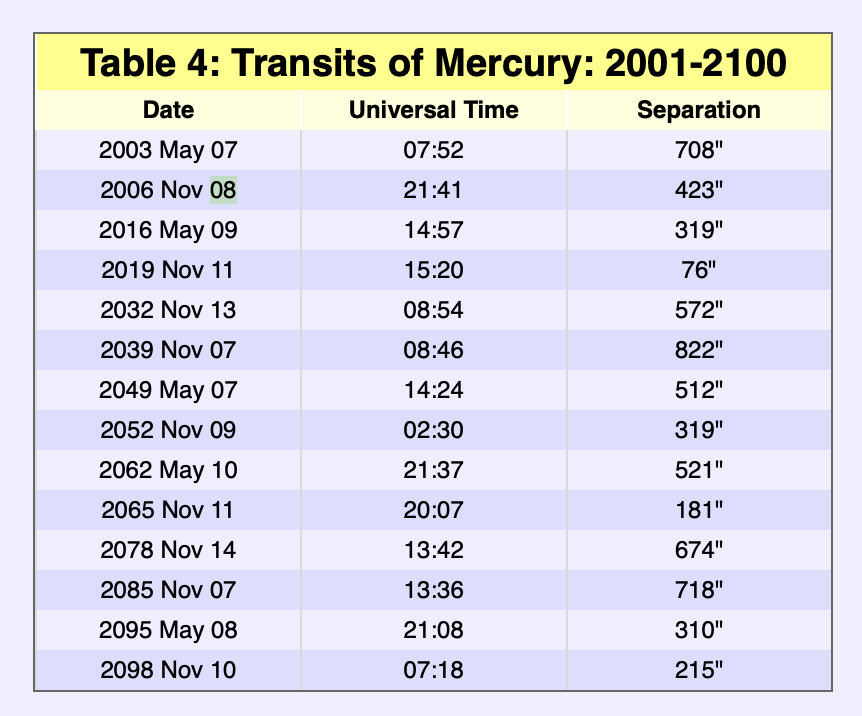 November 11, 2019 Mercury Transits the Sun…
November 11, 2019 Mercury Transits the Sun…
Mercury and Venus transits over the Sun are similar to a Total Solar Eclipse in effect however, these transits when visible show only a tiny black dot of either Venus or Mercury going over the face of the Sun. The cool thing is getting to witness these planets interacting directly with the Sun (the source of light and life for the Earth).
Mercury and the Mind
Mercury represents the mind, perception, communication and how we creatively communicate who we are through what we think, say and do. Mercury transits accelerate and magnify opportunities to connect with the source of light and life initiating new ways of thinking, speaking and communicating. The current transit is happening in the constellation of the Scales (a.k.a Libra) suggesting it is time to rebalance what we think and say with what we do.
From Earth on Monday, Nov 11, 2019 Mercury passes in front the Sun at about 19 Scorpio. The last time we had a Mercury Transit in November was November 08, 2006 at 16 Scorpio. The next time it happens in November is November 13, 2032 at about 22 Scorpio but it will be May of 2049 before its visible in the US and Canada again. Insights on Mercury in Scorpio.

The last time we had a Mercury Transit was more recently May 09, 2016 around 19 Taurus. The next May Mercury transit is May 7, 2049 around 17 Taurus. (see table below for Mercury Transit dates for 2000 to 2100)
Notice in the table below transits of Mercury fall near May 8 and November 10 in the years they do occur. This is because Mercury’s orbit is inclined seven degrees to Earth’s orbit intersecting the ecliptic at two points or nodes. These Nodes are what determine the Mercury transits over the Sun when both the Sun and retrograde Mercury reach these points at the same time.
Perihelion and Aphelion Transits
November transits occur when Mercury is closest to the Sun (perihelion). May transits occur when Mercury is furthest from the Sun (aphelion) decreasing the occurrence of a May transit dramatically (nearly 2 to 1 times) due to Mercury’s slower orbital motion when further away from the Sun during aphelion. This means Mercury is less likely to cross the node at the same time as the Sun.
NOTE: November transits recur at intervals of 7, 13, or 33 years while May transits recur only over 13 or 33 years.
The November 11, 2019 Mercury transit begins at 4:35 am Pacific Time (before sunrise) and 7:35 am Eastern Time (after sunrise). Be sure to adjust for your time zone. The transit lasts nearly six hours. See link at end of this post for transits times from major USA cities.

This movie shows the transit and where it is visible by science-artist Larry Koehn of ShadowandSubstance.com:
The Atlantic coast of the United States is the best place to see the entire transit.
The Pacific coast will see the transit already in progress at sunrise – seeing the tiny black dot crossing the face of Sun requires special filters to safely Sun gaze and see the transit.
Similar to a Solar Eclipse be sure to use eclipse glasses or some other kind of light filter to observe the transit. I personally use a welders glass I got years ago but it might be best to go with something rated as safe for Solar Eclipse viewing. This link has lots of options available on Amazon or you can google eclipse glasses to find other options.
Even better is to use a telescope with appropriate solar filters due to how small Mercury is crossing the Sun.
It is important find a safe way to observe the Mercury transit over the Sun and depending on what you choose you may find you are witnessing an active bubbling fiery cauldron that is likely to expand your perception of the Sun and our solar system. How cool is that?
More data about the Mercury Transit HERE

